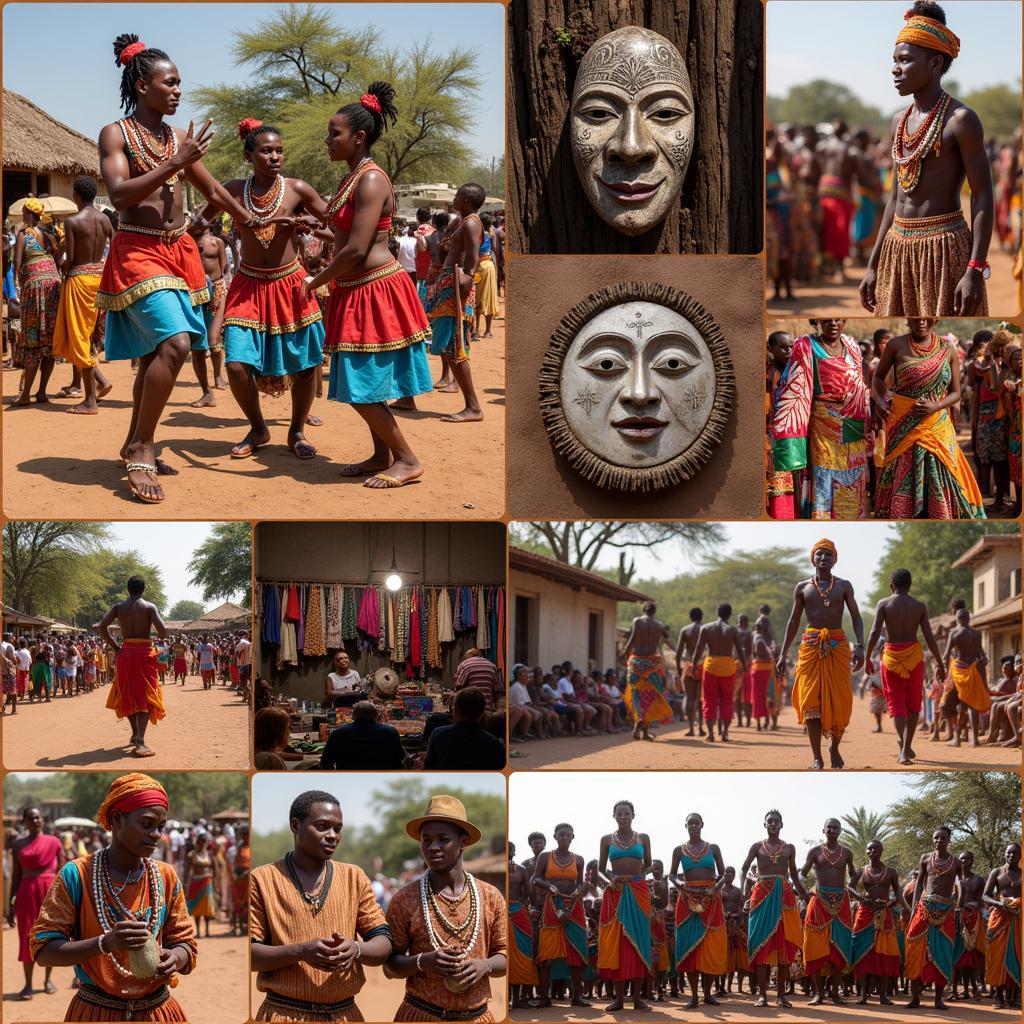The African Cooking Pot: More Than Just a Vessel
The African Cooking Pot is a ubiquitous symbol of African cuisine and culture. It is more than just a cooking utensil; it is a vessel that holds the history, traditions, and flavors of the continent. From the clay pots of West Africa to the cast iron pots of South Africa, each region boasts unique variations, reflecting the diversity of African culinary heritage.
A Culinary Legacy: The History and Significance of the African Cooking Pot
african-cooking-pots-variety|A variety of African cooking pots|Show a diverse collection of African cooking pots, showcasing different materials, sizes, and designs. Highlight the unique features of each type of pot, such as the three legs of the potjiekos or the rounded shape of the tagine.>
The origins of the African cooking pot can be traced back thousands of years. Archaeological evidence suggests that early Africans used clay pots for cooking as far back as the Neolithic period. These early pots were simple in design, often round and shallow, and were used for both cooking and storage. Over time, different cultures developed their own distinct styles and techniques for making and using cooking pots.
The materials used to make African cooking pots vary depending on the region and its resources. Clay is a common material, as it is readily available and retains heat well. Other materials include cast iron, copper, and aluminum. Each material imparts its unique flavor and cooking properties to the food.
The African cooking pot is not just a utilitarian object; it also plays an important role in social and cultural traditions. In many African cultures, the cooking pot is a symbol of the hearth and home, and it is often passed down from generation to generation. Meals prepared in the cooking pot are often shared communally, symbolizing unity and togetherness.
Types of African Cooking Pots
woman-cooking-with-clay-pot|A woman cooking with a clay pot over an open fire|Depict a woman in traditional African clothing, expertly using a clay pot to cook a flavorful stew over an open fire. Emphasize the connection between traditional cooking methods and the African cooking pot.>
Clay Pots:
Clay pots are perhaps the most iconic type of African cooking pot. They are found throughout the continent and are known for their ability to retain heat and distribute it evenly. Clay pots are ideal for slow-cooking stews, soups, and beans.
Cast Iron Pots:
Cast iron pots are another popular choice for African cooking. They are durable, heat evenly, and can be used on both stovetops and open fires. Cast iron pots are perfect for searing meat, frying, and baking.
Tagines:
Tagines are conical-shaped cooking pots that originated in North Africa. They are made from clay or ceramic and have a distinctive lid that helps to trap steam and moisture. Tagines are perfect for slow-cooking tender meat and vegetables.
Using an African Cooking Pot
family-enjoying-meal-cooked-in-african-pot|A family enjoying a meal cooked in an African pot|Capture a heartwarming scene of an African family gathered around a table, sharing a delicious meal cooked in a traditional African pot. Highlight the sense of community and togetherness associated with African cuisine.>
Using an African cooking pot is a rewarding experience that connects you to centuries of culinary tradition. Here are a few tips:
-
Seasoning: Most African cooking pots, especially clay and cast iron, require seasoning before first use. This process involves coating the pot with oil and heating it to create a non-stick surface.
-
Heat: Start with low to medium heat and gradually increase as needed. Avoid drastic temperature changes, as this can crack clay pots.
-
Cleaning: Hand wash your African cooking pot with warm soapy water. Avoid abrasive cleaners, as they can damage the surface.
The African Cooking Pot: A Symbol of Heritage and Flavor
The African cooking pot is more than just a cooking utensil; it is a symbol of African culture and heritage. It represents the ingenuity, resourcefulness, and culinary creativity of the African people. From the simplest clay pot to the most elaborate tagine, the African cooking pot continues to play a vital role in preserving and celebrating African culinary traditions.
FAQ
1. What is the best way to clean an African cooking pot?
Hand washing with warm soapy water is the best way to clean an African cooking pot. Avoid abrasive cleaners.
2. Can I use an African cooking pot on an induction cooktop?
Not all African cooking pots are compatible with induction cooktops. Check the manufacturer’s instructions.
3. What are some traditional African dishes that can be cooked in a cooking pot?
Some popular dishes include jollof rice, fufu, egusi soup, and tagine.
4. What is the significance of the shape of a tagine?
The conical shape of the tagine allows steam to circulate and condense, keeping the food moist and flavorful.
5. Where can I buy an authentic African cooking pot?
You can find African cooking pots at specialty kitchen stores, online retailers, and African markets.
Need Help?
For any assistance, please contact us at:
- Phone Number: +255768904061
- Email: [email protected]
- Address: Mbarali DC Mawindi, Kangaga, Tanzania
We have a 24/7 customer support team ready to assist you.


